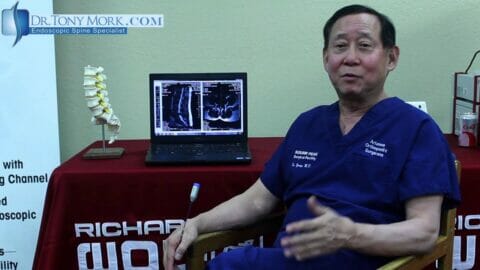Golf is a sport that is enjoyed by 30 million people in the United States according to the…
Category: Facet Syndrome
This is the facet syndrome section of our blog where we discuss all things that have to do with the facets in the spine and the nerves that are impacted by facet syndrome.
Facet Degeneration and Facet Joint Syndrome
What Three Things Contribute to Facet Degeneration and Facet Joint Syndrome The body exists in one of two…
What Is Facet Joint Syndrome?
Unlike spinal conditions caused by acute injury, facet joint syndrome develops with age. Facet joints are located in…
Facet Joint Syndrome Endoscopic Surgery
Facet Joint Let’s talk about facet joint syndrome or spinal arthritis. This condition becomes more common with age.…
Facet Syndrome After Transfacet Decompression
Transcript Hi Dr. Tony Mork here. Board-certified orthopedic spine surgeon and endoscopic spine specialist, just over the last…
Facet Joint Debridement Risks & Complications
Facet Debridement Procedure – Risks & Complications Today I would like to talk about the risks and complications…
Facet Syndrome After Open Laminectomy
Facet Syndrome After Open Laminectomy I am Dr. Tony Mork, endoscopic spine specialist. Today I would like to…
Facet Joint Interview with Dr. Tony Yeung
Interview with Dr. Tony Yeung DR. MORK: Recently I was asked some questions and I was going to…
Facet Syndrome After Transfacet Decompression
Facet Syndrome After Transfacet Decompression Hi, I’m Dr. Tony Mork, board-certified orthopedic spine surgeon, endoscopic spine specialist over…
Facet Pain
Where are the Facets? The facets are joints located toward the back of the spine. You must understand…



